Free Convective Heat Transfer in a Closed Gap between Concentric Semi-Hemispheres
Abstract
1. Introduction
2. The Treated Assembly
3. Numerical Resolution
4. Results
- (a)
- The aspect ratio values A = 0.15, 0.30, 0.50, 0.75, 1.00, 1.25, and 1.5;
- (b)
- The Rayleigh number in the 5.33 × 103–4.50 × 108 range according to the considered values of the heat flux and the aspect ratio A as specified in Table 1.
- (a)
- The convective power:
- (b)
- The pure conductive power (immobile fluid) exchanged through the air gap between the hot inner wall at temperature and the cold outer one at temperature .
- (a)
- Results of [17] concerning spheres subjected to constant heat flux:
5. Conclusions
Author Contributions
Funding
Institutional Review Board Statement
Informed Consent Statement
Data Availability Statement
Conflicts of Interest
Nomenclature
| enclosure aspect ratio (-) | |
| air thermal diffusivity (m2s−1) | |
| air specific heat (J·kg−1K−1) | |
| vector opposite to the gravity field | |
| acceleration of the gravity (m·s−2) | |
| coefficient in Equation (8) | |
| distance between the cold and hot walls (m) | |
| exponent in Equation (8) | |
| outgoing normal | |
| mean Nusselt number (-) | |
| pressure (Pa) | |
| dimensionless pressure (-) | |
| Prandtl number (-) | |
| radius of the external semi-hemisphere (m) | |
| radius of the internal semi-hemisphere (m) | |
| Rayleigh number (-) | |
| surface (m2) | |
| temperature (K) | |
| external semi-hemisphere mean temperature (K) | |
| internal semi-hemisphere mean temperature (K) | |
| dimensionless temperature (-) | |
| velocity vector | |
| dimensionless velocity vector (-) | |
| Greek symbols | |
| air volumetric coefficient of expansion (K−1) | |
| deviation (%) | |
| (%) | |
| deviation (%) | |
| operator Laplacian | |
| operator nabla | |
| heat flux (Wm−2) | |
| thermal conductivity of air (W/mK) | |
| dynamic viscosity of air (Pa·s) | |
| density of air (kg·m−3) | |
| streamlines | |
| Subscripts | |
| from Equation (9) to Equation (14) | |
| from any reference | |
| from direct simulation | |
References
- Basak, T.; Anandalakshmi, R.; Biswal, T. Analysis of convective heat flow visualization within porous right angled triangular enclosures with a concave/convex hypotenuse. Numer. Heat Transf. Part A Appl. 2013, 64, 621–647. [Google Scholar] [CrossRef]
- Sheremet, M.A.; Grosan, T.; Pop, I. Thermal convection in a chamber filled with a nanosuspension driven by a chemical reaction using Tiwari and Das’ model. Int. J. Numer. Methods Heat Fluid Flow 2020, in press. [Google Scholar] [CrossRef]
- Baudoin, A.; Saury, D.; Zhu, B.; Boström, C. Experimental optimization of passive cooling of a heat source array flush-mounted on a vertical plate. Energies 2016, 9, 912. [Google Scholar] [CrossRef]
- Oztop, H.F.; Almeshaal, M.A.; Kolsi, L.; Rashidi, M.M.; Ali, M.E. Natural convection and irreversibility evaluation in a cubic cavity with partial opening in both top and bottom sides. Entropy 2019, 21, 116. [Google Scholar] [CrossRef] [PubMed]
- Baïri, A. Transient thermal characteristics of airborne electronic equip-ment with discrete hot bands in a confined environment. Appl. Energy 2008, 85, 951–967. [Google Scholar] [CrossRef]
- IMiroshnichenko, V.; Sheremet, M.A.; Mohamad, A.A. The influence of surface radiation on the passive cooling of a heat-generating element. Energies 2019, 12, 980. [Google Scholar] [CrossRef]
- Shiina, Y.; Fujimura, K.; Kunugi, T.; Akino, N. Natural convection in hemispherical enclosure heated from below. Int. J. Heat Mass Transf. 1994, 37, 1605–1617. [Google Scholar] [CrossRef]
- Baïri, A. A synthesis of correlations on quantification of free convective heat transfer in inclined air-filled hemispherical enclosures. Int. Commun. Heat Mass Transf. 2014, 59, 174–177. [Google Scholar] [CrossRef]
- Abu-Nada, E. Modeling of various heat transfer problems using dissipative particle dynamics. Numer. Heat Transf. Part A Appl. 2010, 58, 660–679. [Google Scholar] [CrossRef]
- Haddad, O.; Baïri, A.; Alilat, N.; Bauzin, J.G.; Laraqi, N. Free convec-tion in ZnO nanofluid-filled and tilted hemispherical enclosures containing a cubic electronic device. Int. Commun. Heat Mass Transf. 2017, 87, 204–211. [Google Scholar] [CrossRef]
- Baïri, A.; Haddad, O.; Alilat, N. Nu-Ra-Pr correlations for nanofluidic natural convection in tilted hemispherical enclosures with active disk. Numer. Heat Transf. 2017, 71, 1094–1103. [Google Scholar] [CrossRef]
- Alilat, N. Natural convective heat transfer in the air-filled interstice be-tween inclined concentric hemispheres: Application to thermoregulation in electronics. Int. J. Numer. Methods Heat Fluid Flow 2017, 27, 2375–2384. [Google Scholar] [CrossRef]
- Alilat, N.; Haddad, O.; Baïri, A. Numerical study of natural convection of ZnO-water nanofluid enclosed between two inclined and concentric hemispheres. Eur. Phys. J. Plus 2020, 135, 146–163. [Google Scholar] [CrossRef]
- Baïri, A.; Laraqi, N. Experimental quantification of natural convective heat transfer within annulus space filled with a H2O-Cu nanofluid saturated porous medium. Application to electronics cooling. Exp. Heat Transf. 2019, 32, 364–375. [Google Scholar] [CrossRef]
- Sheremet, M.A. Mathematical simulation of unsteady natural convection inside a sphere. Comput. Therm. Sci. Int. J. 2011, 3, 277–287. [Google Scholar] [CrossRef]
- Raithby, G.; Hollands, K. A general method of obtaining approximate solutions to laminar and turbulent free convection problems. Adv. Heat Transf. 1975, 11, 265–315. [Google Scholar]
- Tazi-Charki, M.N.; Daoudi, S.; le Palec, G.; Daguenet, M. Etude numérique du modèle de Boussinesq de convection naturelle laminaire axisymétrique permanente dans un espace annulaire compris entre deux sphères. Rev. Générale Therm. 1997, 36, 239–251. [Google Scholar] [CrossRef]
- Scanlan, J.A.; Bishop, E.H.; Powe, R.E. Natural convection heat transfer between concentric spheres. Int. J. Heat Mass Transf. 1970, 13, 1859–1872. [Google Scholar] [CrossRef]
- Teertstra, P.; Yovanovich, M.; Culham, J.R. Natural convection meas-urements for a concentric spherical enclosure. J. Heat Transf. 2006, 128, 580–587. [Google Scholar] [CrossRef][Green Version]
- Garg, V.K. Natural convection between concentric spheres. Int. J. Heat Mass Transf. 1992, 35, 1935–1945. [Google Scholar] [CrossRef]
- Baïri, A.; Martín-Garín, A.; Alilat, N.; Roseiro, L.; Millán-García, J.A. Quantification of free convection in a quarter-spherical innovative Trombe wall design. J. Build. Eng. 2021, 42, 102443. [Google Scholar] [CrossRef]
- Pastori, S.; Mereu, R.; Mazzucchelli, E.S.; Passoni, S.; Dotelli, G. Energy performance evaluation of a ventilated façade system through CFD modeling and comparison with international standards. Energies 2021, 14, 193. [Google Scholar] [CrossRef]
- Baïri, A.; Martín-Garín, A.; Ilinca, A.; Alilat, N.; Millán-García, J.A. Thermal state of a concentric quarter spherical enclosure subjected to air free convection. J. Therm. Anal. Calorim. 2021. [Google Scholar] [CrossRef]
- Bejan, A. Convection Heat Transfer, 4th ed.; John Wiley & Sons, Inc.: Hoboken, NJ, USA, 2013. [Google Scholar] [CrossRef]
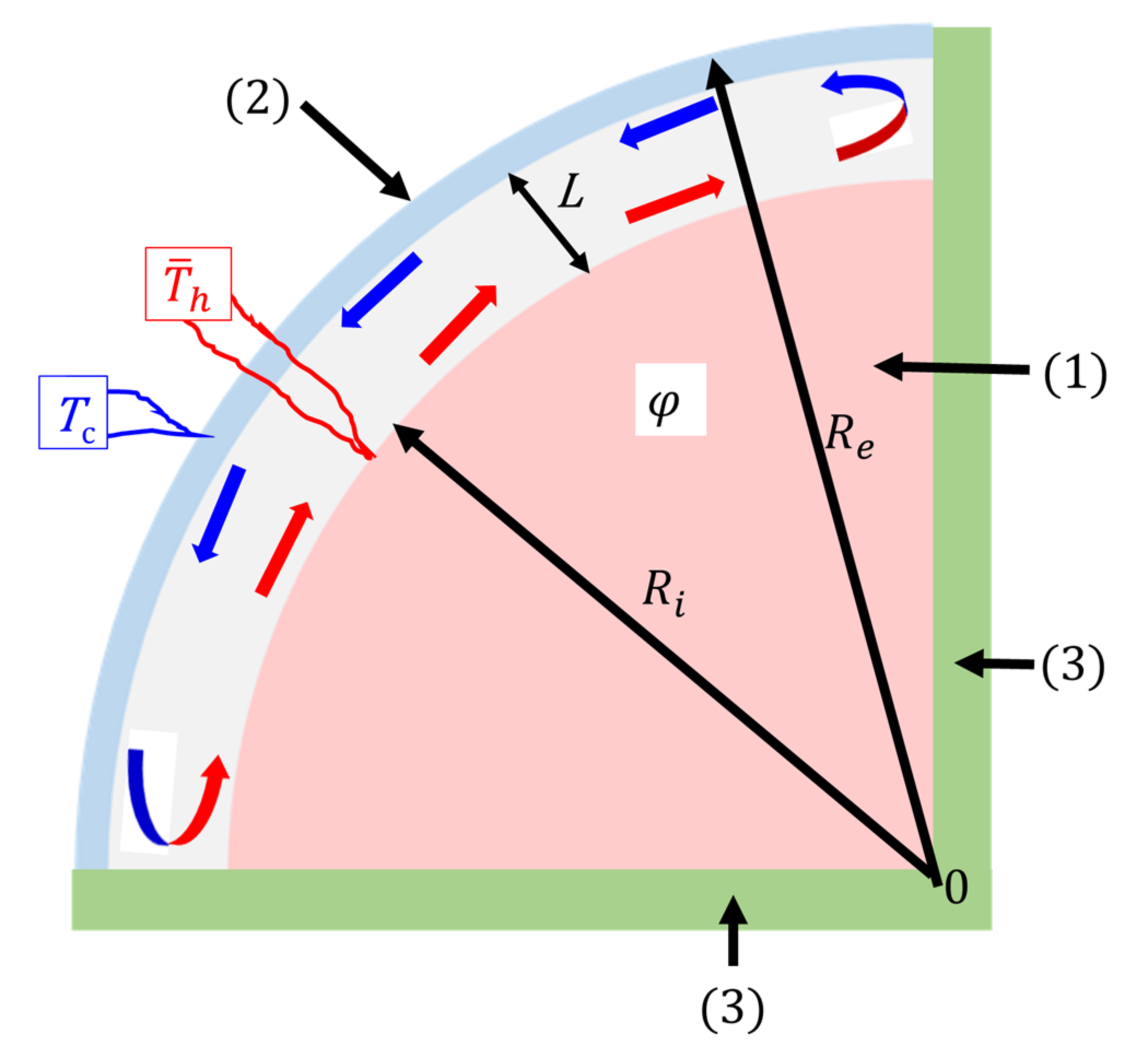
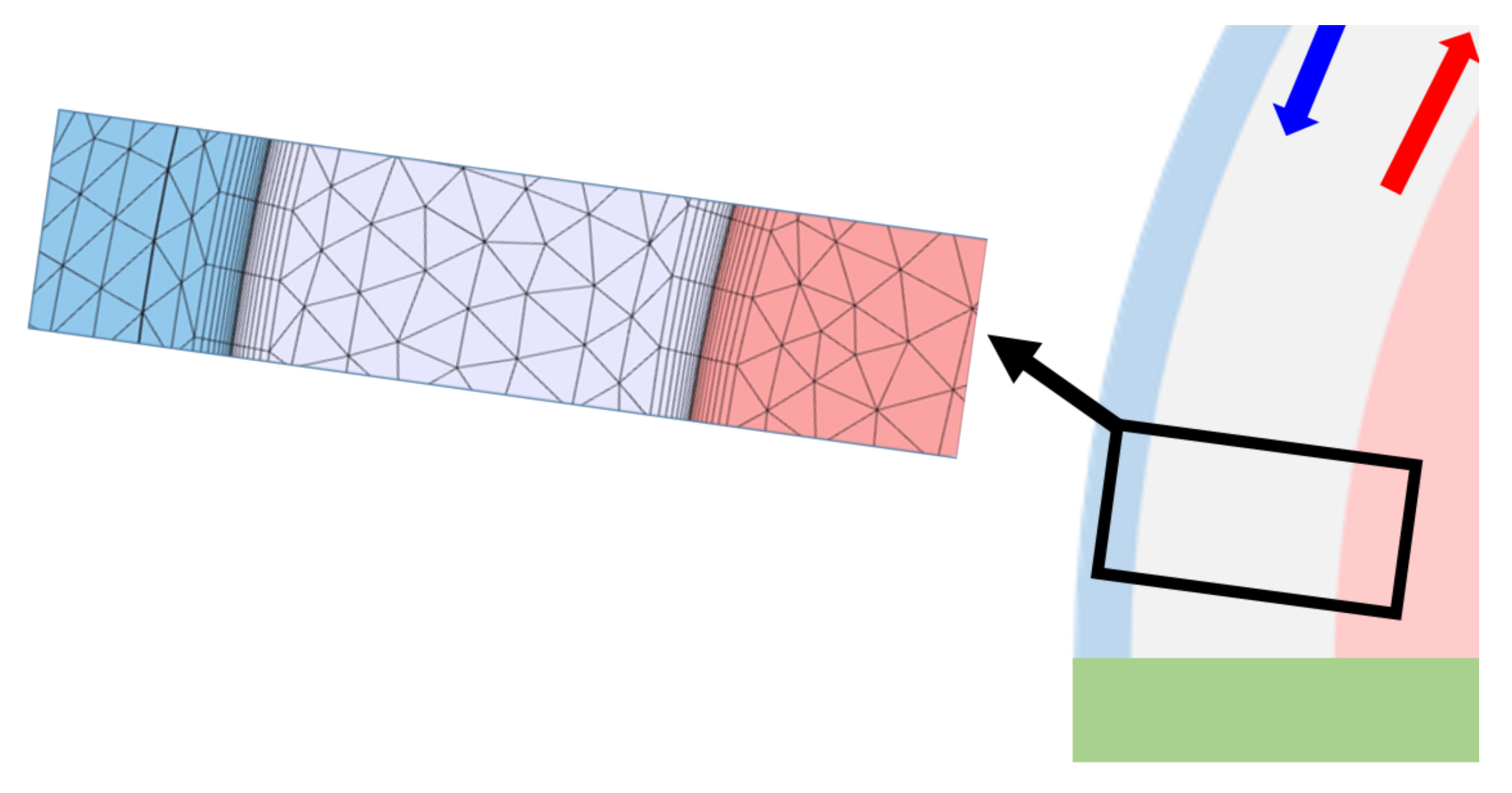
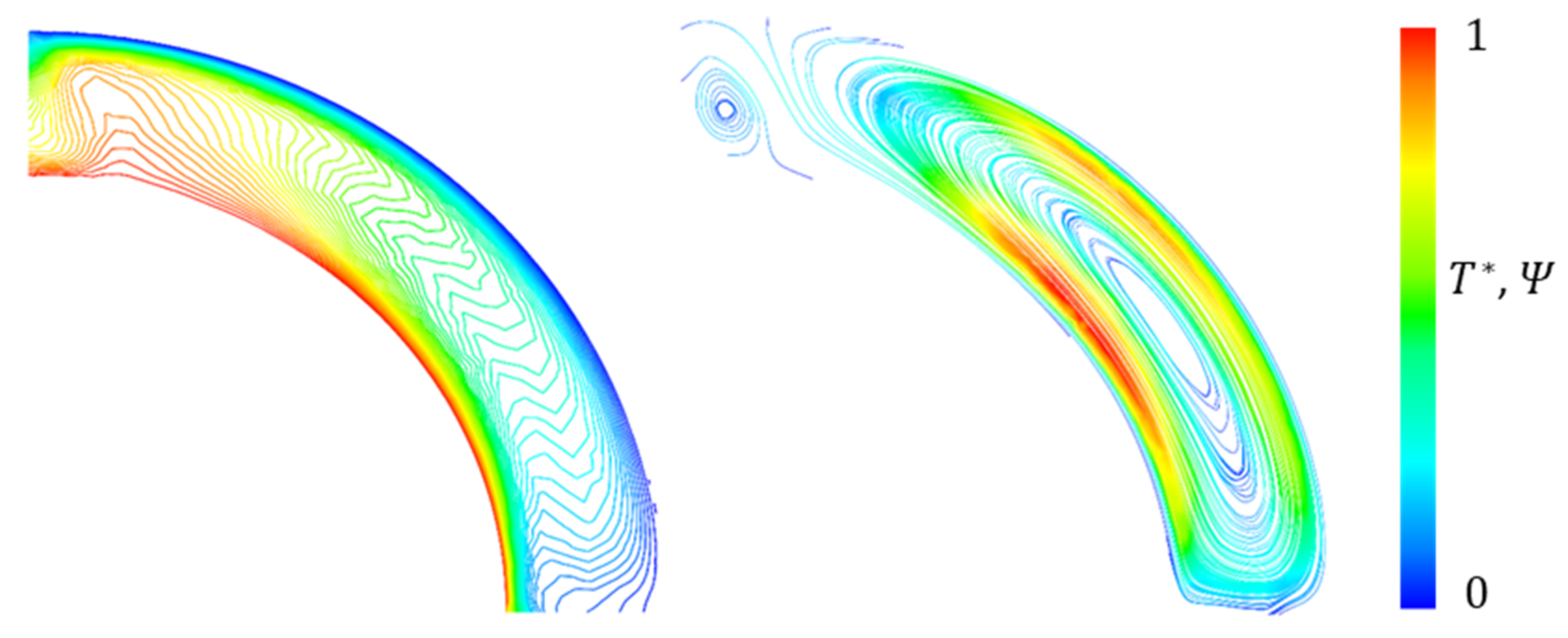
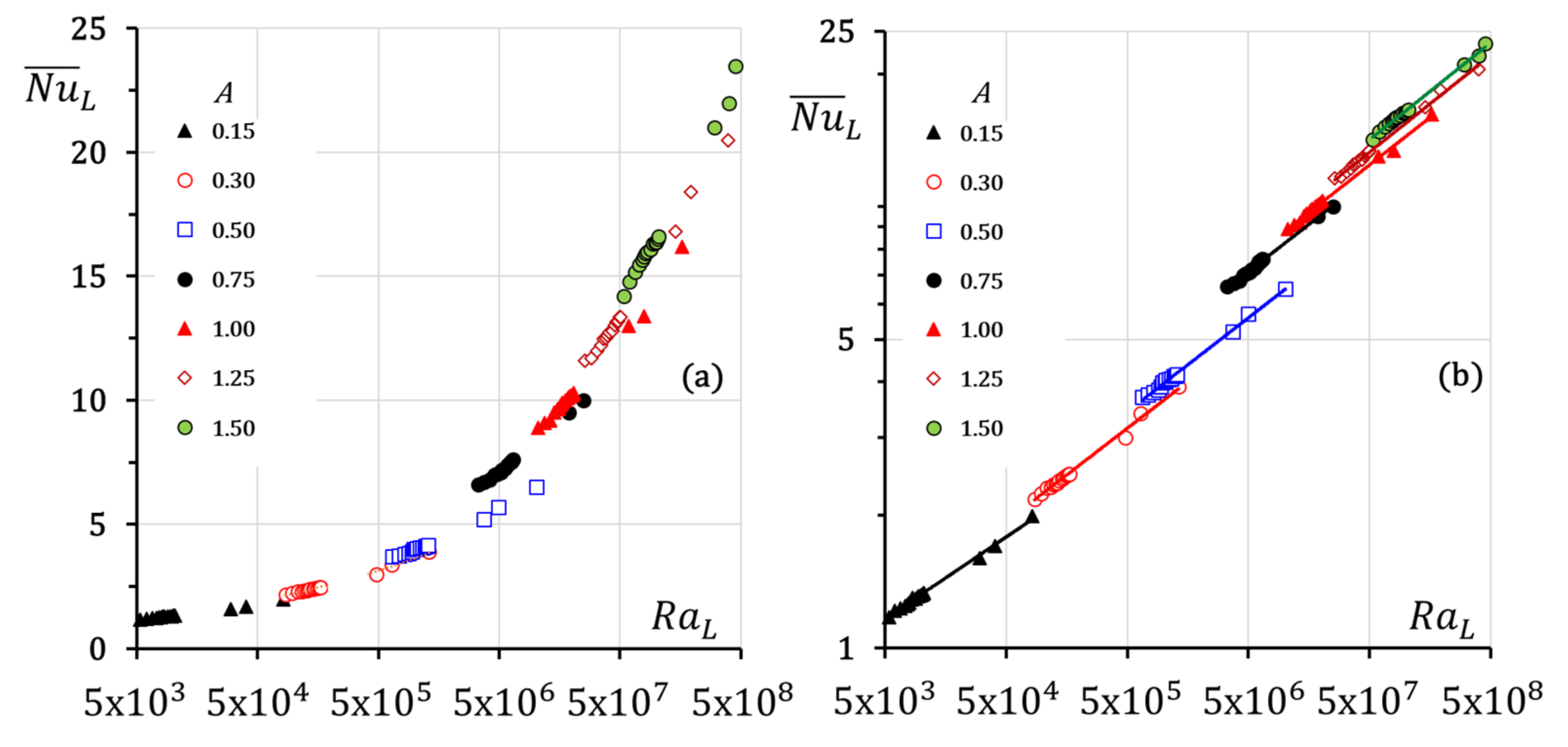
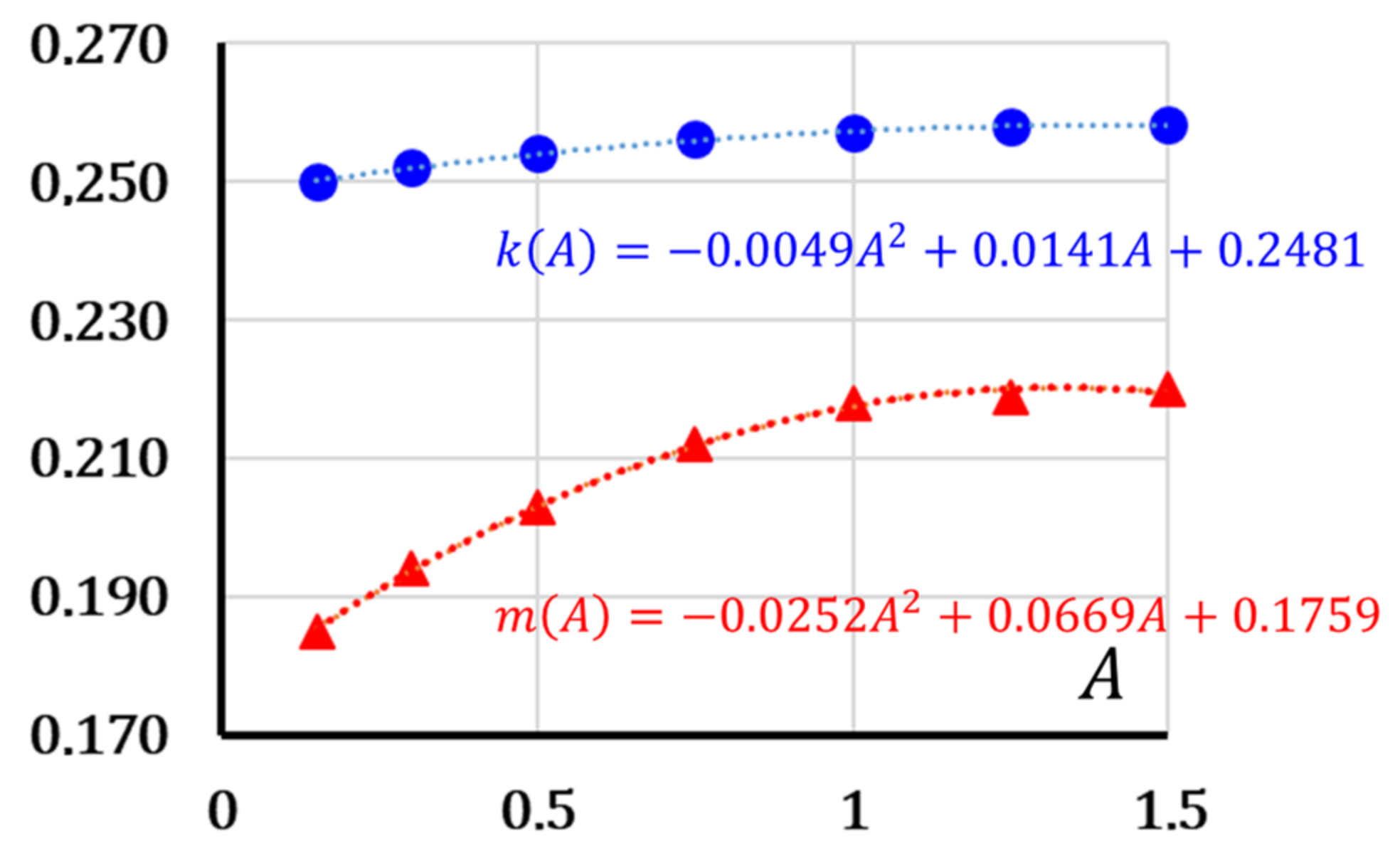
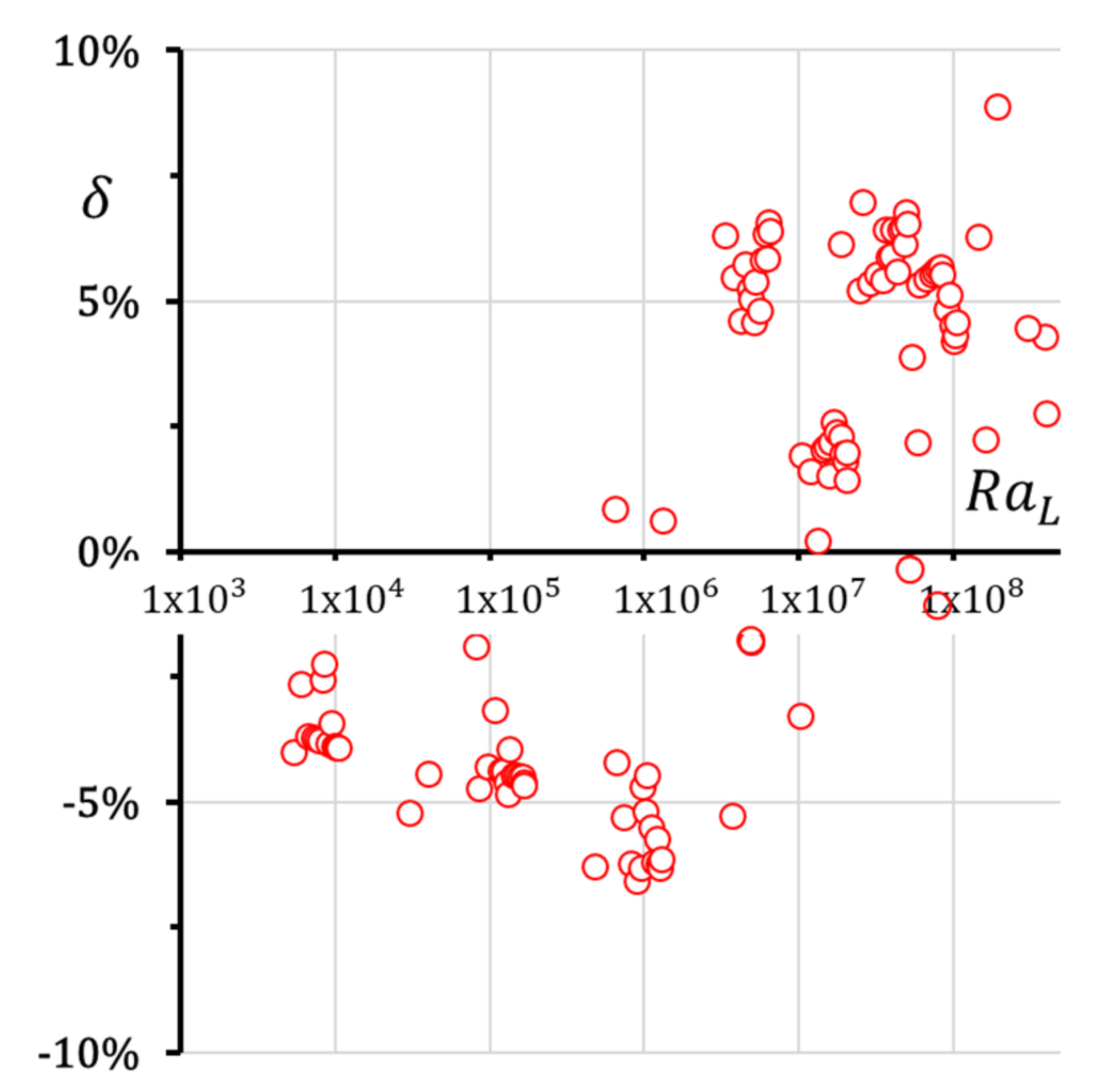
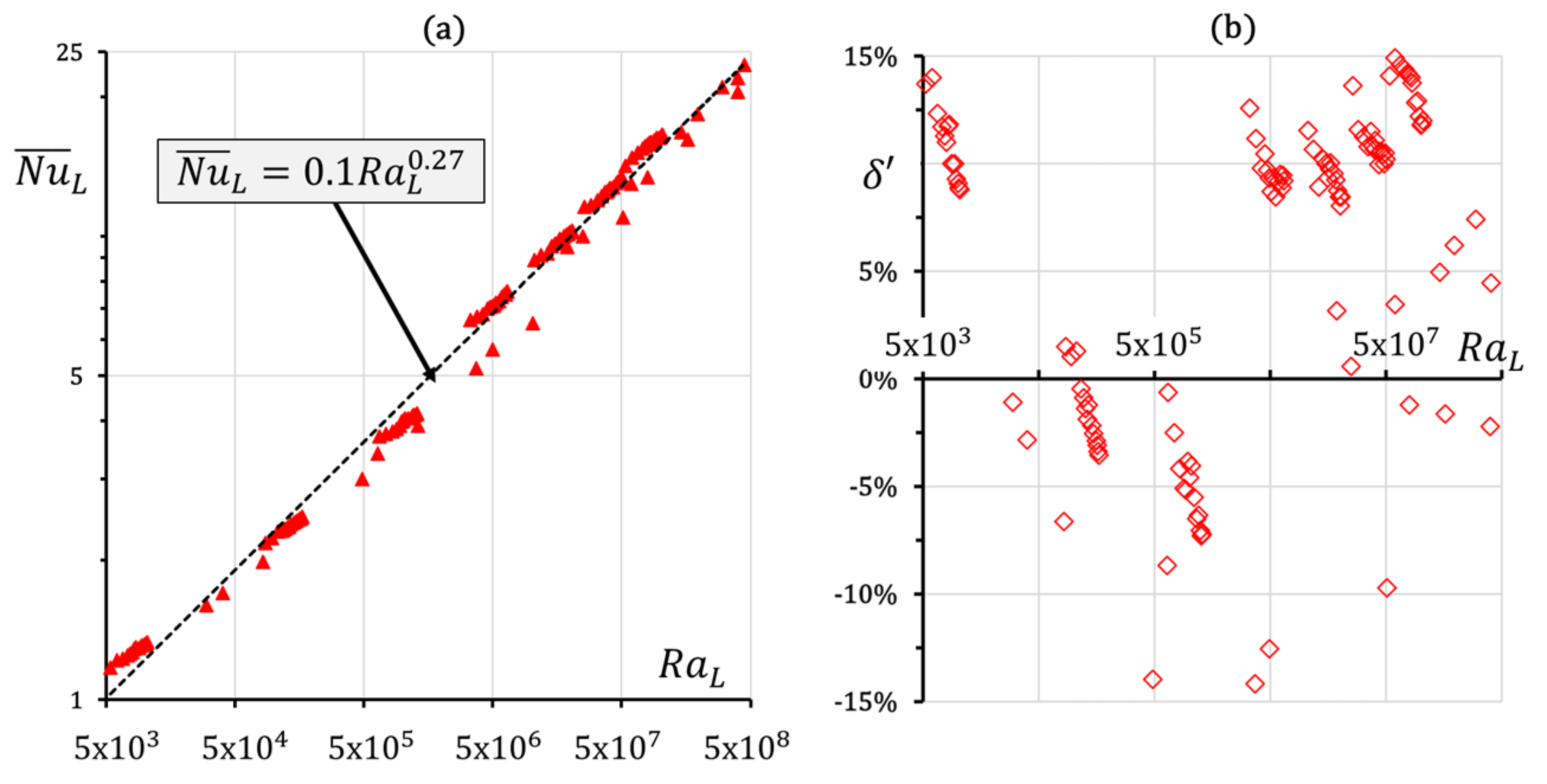

| 0.15 | 0.30 | 0.50 | 0.75 | 1.00 | 1.25 | 1.5 | |
|---|---|---|---|---|---|---|---|
| min | 5.33 × 103 | 8.54 × 104 | 6.59 × 105 | 3.33 × 106 | 1.05 × 107 | 2.57 × 107 | 5.33 × 107 |
| max | 8.20 × 104 | 1.31 × 106 | 1.01 × 107 | 5.13 × 107 | 1.62 × 108 | 3.95 × 108 | 4.50 × 108 |
Publisher’s Note: MDPI stays neutral with regard to jurisdictional claims in published maps and institutional affiliations. |
© 2021 by the authors. Licensee MDPI, Basel, Switzerland. This article is an open access article distributed under the terms and conditions of the Creative Commons Attribution (CC BY) license (https://creativecommons.org/licenses/by/4.0/).
Share and Cite
Baïri, A.; Alilat, N.; Martín-Garín, A.; Adeyeye, K.; Millán-García, J.-A.; Roseiro, L. Free Convective Heat Transfer in a Closed Gap between Concentric Semi-Hemispheres. Energies 2021, 14, 7479. https://doi.org/10.3390/en14227479
Baïri A, Alilat N, Martín-Garín A, Adeyeye K, Millán-García J-A, Roseiro L. Free Convective Heat Transfer in a Closed Gap between Concentric Semi-Hemispheres. Energies. 2021; 14(22):7479. https://doi.org/10.3390/en14227479
Chicago/Turabian StyleBaïri, Abderrahmane, Nacim Alilat, Alexander Martín-Garín, Kemi Adeyeye, José-Antonio Millán-García, and Luis Roseiro. 2021. "Free Convective Heat Transfer in a Closed Gap between Concentric Semi-Hemispheres" Energies 14, no. 22: 7479. https://doi.org/10.3390/en14227479
APA StyleBaïri, A., Alilat, N., Martín-Garín, A., Adeyeye, K., Millán-García, J.-A., & Roseiro, L. (2021). Free Convective Heat Transfer in a Closed Gap between Concentric Semi-Hemispheres. Energies, 14(22), 7479. https://doi.org/10.3390/en14227479








